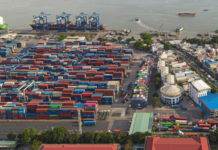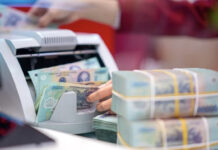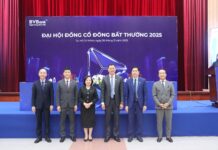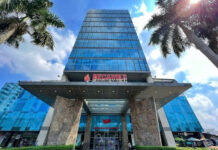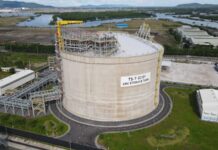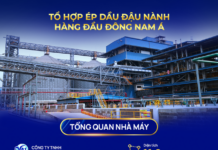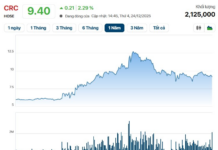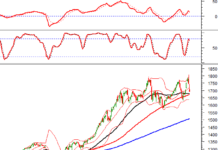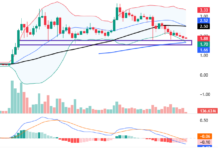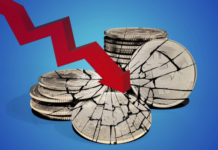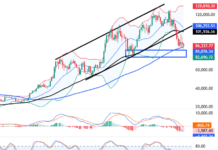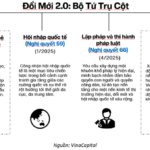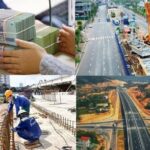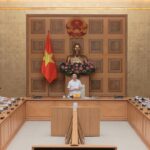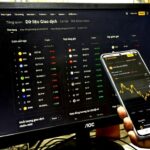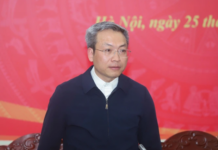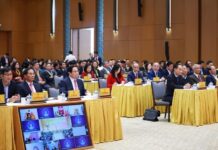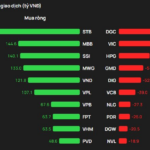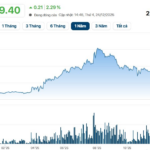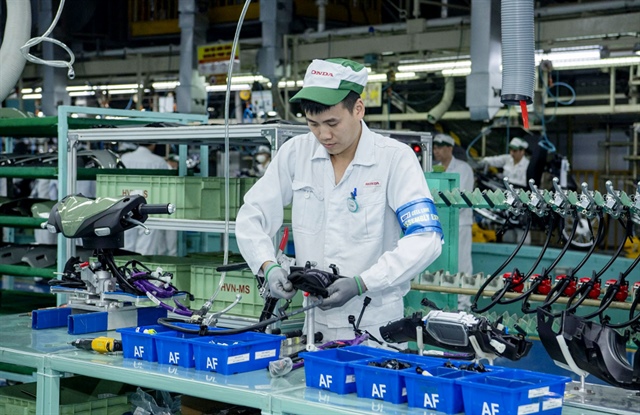
Vietnam’s Position Remains Stable Amidst Trade Tax Volatility |
Over four months ago, the U.S. announced extremely high trade taxes of up to 46% on Vietnamese goods, raising concerns about capital withdrawal and investment flow shifts. Businesses feared losing their competitive edge and facing investment environment instability. However, the U.S. administration later adjusted its policy, imposing more balanced taxes on ASEAN countries.
Specifically, on July 31, President Donald Trump issued an executive order setting taxes at 19-20% for imported goods from ASEAN countries, with Singapore at 10%, Laos and Myanmar at 40%, and Brunei at 25%. This adjustment alleviated concerns about capital withdrawal from Vietnam due to high taxes and created a more stable investment environment.
Competitors such as Thailand, Indonesia, Malaysia, the Philippines, and Cambodia face similar tax rates, leveling the playing field for FDI attraction. Experts believe that Vietnam’s 20% tax rate does not significantly differ from other countries, minimizing negative impacts on international businesses’ investment strategies.
“If the trade tax rate stays between 15-20%, this gap is not significant enough to alter global supply chains or trigger substantial investment flow shifts,” said Mr. Huynh Hoang Phuong, an independent analyst, during a recent talk show related to securities. He also stated that FDI would not face as much pressure in choosing between different countries as before.
Economists like Nguyen Xuan Thanh from the Fulbright School of Public Policy and Management emphasized that international corporations are now adopting a ‘China +2, +3’ strategy, not just focusing on one alternative location. This is a positive sign, as Vietnam remains an attractive option due to its location, labor force, and political stability, even with China’s expansion.
An Opportunity for Supporting Industries
One notable aspect of U.S. trade taxes is the extremely high rates imposed on transshipped goods to prevent tax evasion from other countries. This encourages final producers or investors, when choosing Vietnam as a significant supplier, to bring their suppliers to invest and develop their supply chains here.
Mr. Pham Xuan Hong, Chairman of the Ho Chi Minh City Textile and Fashion Association, shared that the textile and garment industry still heavily relies on imported materials, notably fabric and yarn from China. Therefore, garment businesses aiming to expand in the U.S. market must increase the localization of materials or seek alternatives from other countries.
With competitive tax rates and a vast market accessed through 20 FTAs with preferential tariffs, Mr. Hong believes that Vietnam’s garment industry, already highly competitive, will attract more international brands to promote supplier investment in Vietnam to reduce risks and enhance competitiveness.
Similarly, businesses in the leather and footwear, electronics, mechanics, and woodwork industries also anticipate a wave of foreign investment into supporting industries. Associate Professor Dr. Nguyen Huu Huan stated that this is an opportunity for Vietnam to restructure its supply chain, increase localization, and reduce dependence on China. Investing in raw materials, instead of merely assembling, adds more value to products and promotes sustainable development.
Attracting High-Tech Investments
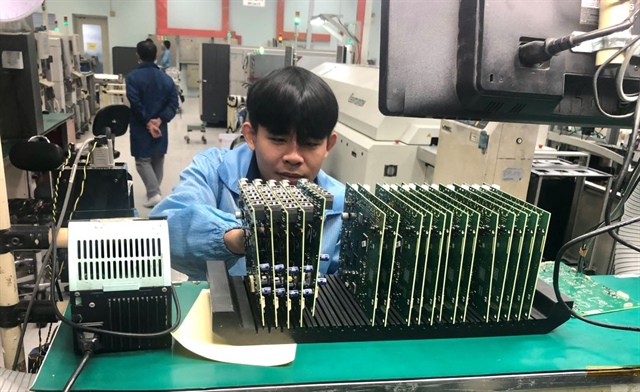
High-tech and semiconductors are also expected to attract more foreign investment. Photo: LH |
According to the United Nations Conference on Trade and Development (UNCTAD), after two consecutive years of decline, global FDI flows slightly recovered to $1,370 billion in 2024 and continued to grow by about 4% in the first half of 2025, mainly due to a rebound in emerging markets such as Asia and Africa.
UNCTAD’s report shows that this year’s FDI flows are concentrated in high-tech sectors, the digital economy, and renewable energy. The semiconductor, artificial intelligence (AI), and renewable energy industries are attracting significant capital. Vietnam, India, and Singapore leverage their young workforce and attractive incentive policies to lure leading global technology corporations.
In the first six months of 2025, Vietnam recorded over $21.5 billion in FDI, with more than 55.6% flowing into the processing and manufacturing industries and high-tech sectors, reflecting a clear shift and expansion of investments in these fields.
Even though the U.S. imposes a trade tax that is 5% lower than India and 10% higher than Singapore, it does not diminish Vietnam’s appeal to international investors. In reality, many large electronics and technology corporations have continuously committed to substantial investments in this country of a billion people, creating a pressing need for policies to attract high-tech investments, especially in semiconductors.
Comparing the U.S. trade taxes imposed on different countries, especially India, Mr. Hieu Le, Senior Director and Head of Industrial Leasing at CBRE Vietnam, believes that Vietnam will maintain investment in electronics and telecommunications and continue to attract high-tech and semiconductor investments.
According to Mr. Hieu, the trend of supply chain shifts away from China remains a factor in maintaining Vietnam’s appeal to high-tech investors. Many businesses have established stable production ecosystems, which are essential for Vietnam to retain high-quality FDI amidst fierce global competition.
Similarly, Dr. Phan Huu Thang, Chairman of the Vietnam Industrial Parks Finance Association (VIPFA), stated that Vietnam has increasingly prominent advantages in high-tech human resources and infrastructure. “Labor costs are still low, while the quality of human resources is continuously being improved to meet the requirements of high-tech investors,” said Dr. Thang.
With its strategic location, open policies, and favorable investment environment, Vietnam is becoming an attractive destination for international businesses looking to expand, especially in processing, high-tech, and renewable energy industries.
However, there are concerns about barriers that may hinder FDI flows. Besides high land rental costs, investors worry about rising input costs (labor, materials, logistics), weak logistics infrastructure, underdeveloped supporting industries, and unstable tax and incentive policies.
According to Dr. Thang, the most significant challenge lies in the delay in comprehensively preparing the necessary steps to attract high-quality, sustainable, and value-added FDI while simultaneously developing various economic, defense, and environmental sectors. Despite Resolution 50, Vietnam needs to enhance its capacity for policy formulation and implementation to effectively attract and manage FDI in the future.
Le Hoang
– 07:00 05/08/2025
“Celebrating 80 Years of Independence: SHB Evokes the Spirit of ‘Happiness as a Vietnamese’”
Celebrating 80 years of the August Revolution (August 19, 1945 – August 19, 2025) and the National Day of the Socialist Republic of Vietnam (September 2, 1945 – September 2, 2025), SHB introduces a series of activities themed “Happiness is Being Vietnamese.” The highlight of these activities is a gift package for customers, spreading happiness and national pride to all customers and the public.
The Innovation Renaissance: From Policy to Practice
Vietnam is embarking on an era of Doi Moi 2.0, a rapid transformation from policy statements to tangible outcomes, as evidenced by the 34 laws passed in June 2025, along with far-reaching administrative reforms. In the coming months, VinaCapital anticipates an accelerated pace of infrastructure investment disbursements, particularly in the transportation and energy sectors. Similarly, the real estate sector is expected to continue benefiting from recent policies that unblock stalled projects.
Unlocking Capital: Vietnam’s Public Investment Disbursement Reaches an Estimated VND 388 Trillion by July End
As of July 31, 2025, the Ministry of Finance estimates that disbursement since the beginning of the year stands at VND 388,301.15 billion, representing 39.45% of the plan and 43.9% of the plan assigned by the Prime Minister. This demonstrates a significant improvement compared to the same period in 2024, when disbursement reached only 27.76% and 33.8% of the respective plans.
The CPI for the first seven months is estimated to increase by 3.2-3.3%.
The Ministry of Finance reports that the consumer price index (CPI) for the first seven months of the year is estimated to have increased by 3.2-3.3% compared to the same period last year. This is an appropriate level that supports economic growth, especially as resources are being focused on achieving the highest possible economic expansion. Vietnam’s inflation is being carefully managed within the target range set by the National Assembly and the Government of 4.5-5%, contributing to macroeconomic stability.
“Financial Institutions Embrace the Digital Asset Revolution”
The legalization of digital assets marks a pivotal moment in Vietnam’s legal history. As the regulatory framework evolves, investment appetite from financial institutions is already evident, with many proactively laying the groundwork and poised to enter the market when the proverbial green light shines.





